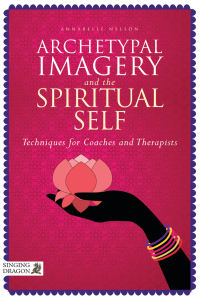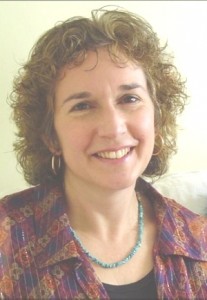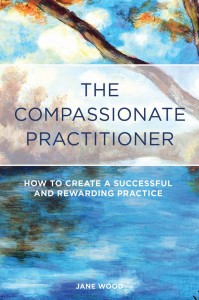One reader’s review of Archetypal Imagery and the Spiritual Self: Techniques for Coaches and Therapists by Annabelle Nelson.
“This slim volume deserves savoring. What I mean is captured by these cherished words of a dying friend: ‘Must be present to win.’ Nelson’s book demands attention and rewards  re-reading. She writes about intentionally seeking an expansive, wise mind. That search and its prize, she says, brings a fuller, quieting outlook on reality, access to previously locked energy, and greater capacity to perceive and achieve one’s highest goals. The method she advances is to thoughtfully select an archetype whose attributes or deeds appear somehow relevant to one’s current situation (a dilemma, perhaps, or a crisis). The next step is to bring the archetype to mind through imagination, using all of one’s senses and the guidance of a coach or therapist, the book’s intended readers as mentioned on the cover.
re-reading. She writes about intentionally seeking an expansive, wise mind. That search and its prize, she says, brings a fuller, quieting outlook on reality, access to previously locked energy, and greater capacity to perceive and achieve one’s highest goals. The method she advances is to thoughtfully select an archetype whose attributes or deeds appear somehow relevant to one’s current situation (a dilemma, perhaps, or a crisis). The next step is to bring the archetype to mind through imagination, using all of one’s senses and the guidance of a coach or therapist, the book’s intended readers as mentioned on the cover.
Our thoughts, feelings, judgments, and actions are already influenced by archetypes, Nelson says, but subconsciously, out of our awareness. They are denizens, one might say, of our hidden mind. Images and emotions are the language of this unconscious realm. When one engages the skills of imagining an archetype, that larger-than-life, mysterious, and possibly mythic being can become a focusing device to override the ego’s control of one’s rationality and open access to non-rational, even counterintuitive and frightening features of one’s psyche.
This coaching model assumes that humans have four bodies, the spiritual, physical, emotional, and mental, which is usually controlled by the ego. The ego is a positive part of human psychology, giving stability, organizing the personality and establishing a sense of self. But over time it becomes rigid, skewing perceptions and relegating uncomfortable thoughts and sensations to the unconscious. This is accomplished by eating up mental energy, and restricting both rational and intuitive thinking and emotional awareness. However, if one softens the ego and thereby the barrier to the other bodies, this in effect creates a more spacious mind. Information from the other bodies, emotional, physical and spiritual, can enter conscious awareness. (p. 182)
The tone of the book is both professional and personal; its material is presented as a synthesis of the understanding Nelson has derived from four decades as a psychologist, teacher, coach and spiritual seeker.
‘Looking at models of the mind both from Western psychology and Eastern religious philosophy gives some guideposts for understanding what happens when the conscious mind opens to the unconscious.’ (p. 28)
The result is a tapestry that shows as sometimes parallel, often coextensive, the paths to emotional health and to spiritual awakening. Nelson ignores conventions against treating in the same conversation these two subjects: one known through logic and the other through intuition. That is the power of this book. It is but an introduction—a handbook, even, for busy practitioners with clients to serve—to the idea that these knowledge fields share common ends and means.
Although I am interested in these subjects, I am unacquainted with present-day thinking and writing about them and am neither coach nor therapist. Nonetheless, I have gained greatly from the insights this book offers. It must be taken on its own terms. It abounds in metaphors. The proof is in the pudding. I have followed to surprisingly good effect the exercises and other aids Nelson provides. She makes no claims that her techniques produce overnight transformation. Anything but, really. As the stories she tells from her own life and the experiences of her clients illustrate, she’s all about the long term, about initially faint apprehensions ripening with familiarity into a new knowing.
In the creative process, the intuitive and rational are intertwined… The wise mind is spacious, allowing opposites to coexist. When logic is needed it can come to the foreground while intuition is in the background, or vice versa. Awareness keeps the space open for the interplay to happen. (p. 177)
Certainly, I carry from this reading a deeper respect for intuition and for using imagery to develop it. Another thing sure to be remembered from this book is the rich possibility of archetypes to reveal otherwise inexpressible truths.
The ‘spiritual self’ of the title has nothing to do with organized religion and none of the archetypes described are drawn from the Abrahamic traditions. Rather most of the illustrative archetypes pre-date and no doubt contributed to these traditions. Nelson invokes the Major Arcana from the Tarot (e.g., Fool, Magician, Chariot, Justice, Hermit) to speak of emotional development and ancient deities from Eastern mythology (e.g., Lilith, Isis, Gaia, Ganesha, Avalokiteshara) to explore spiritual development.
My favorite chapter is the final one, ‘What if Life Were Sweet?’ Of course its impact depends upon everything conveyed in the preceding chapters. Here is a brief excerpt:
Opening the mind to wisdom is not an easy task. It is a complex and simultaneously subtle endeavor. The ego’s hold on stability is sacrificed for the connection to spirit that brings peace and joy. The delusion of control and separation erodes to a softer, warmer and friendlier awareness. The sense of Self is not constricted to fragmented thoughts or overwhelming emotions. Trust doesn’t rest with control of the inner world, but with the sense of interconnection. Stability comes from a focus of attention, not from a defensive posture.
There is a theme in both the deity and tarot archetypes. Almost all of them face a crisis. Lilith is thrown out of Eden. Isis’ husband is taken and murdered. Avalokiteshvara loses his faith and his brain is shattered, while Ganesha’s head is cut off. These deities became powerful in the face of despair, pain, grief and rejection. The world they inhabited ended in some way, and survival depended on adaptation to tap the power inside to become wise. The unconscious not only contained their fears, but also hid their strengths. When the unconscious is opened, hidden strengths are apparent. An individual is essentially changed from the inside out since there is more energy and power. (p. 181)”—Michele Minnis, PhD
Michele Minnis, PhD, is retired from a career at the University of New Mexico, where she of taught legal and expository writing, did research on cross-disciplinary collaboration, and served on the founding faculty of a master’s degree program in water resources management. She and Annabelle went to graduate school together at the University of Kansas, Department of Human Development.
For more information or to purchase a copy of Archetypal Imagery and the Spiritual Self, click here.



